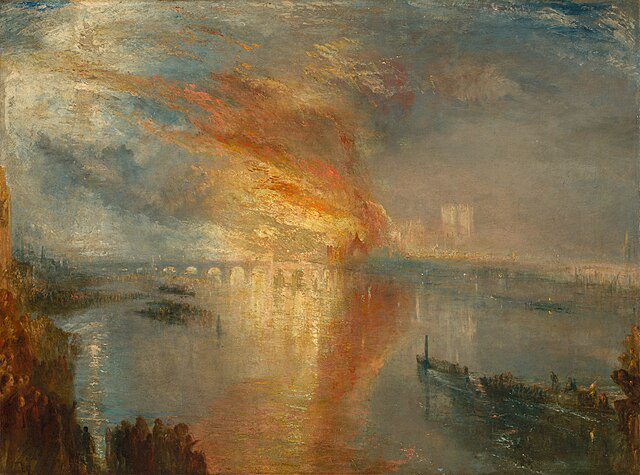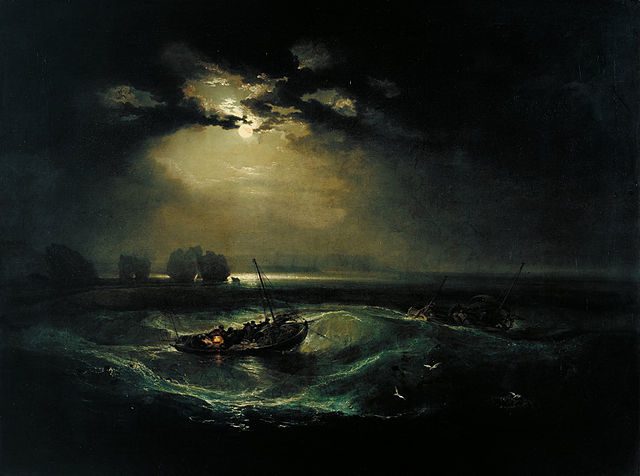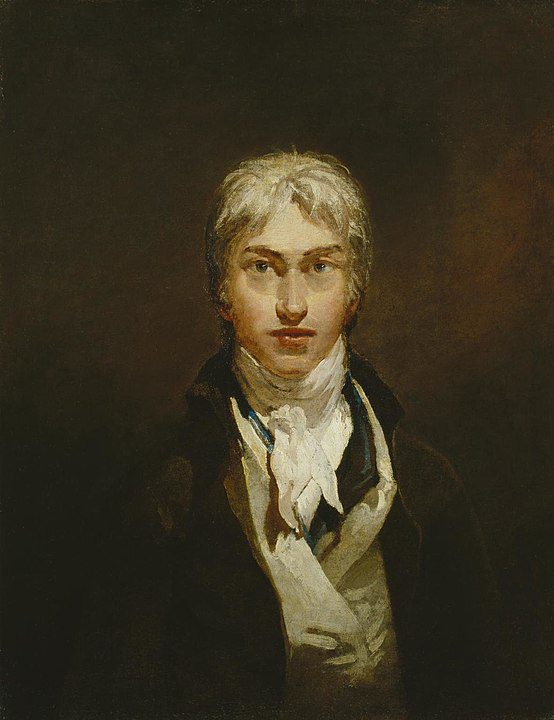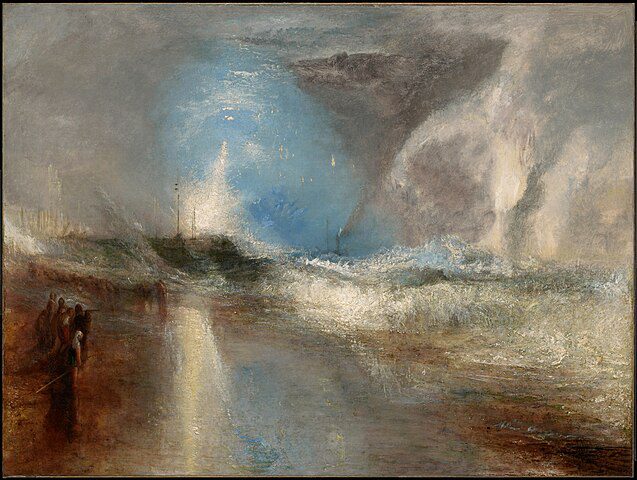
Joseph Mallord William Turner (1775–1851) was an English painter whose work is celebrated for its pioneering approach to landscape painting and its profound influence on the Romantic movement. Turner’s art is characterized by his extraordinary ability to capture light and atmospheric effects, creating dynamic and dramatic scenes that merge the sublime with the natural world. His innovative techniques and visionary approach to painting landscapes and seascapes established him as one of the greatest painters of the 19th century.
Born in London, Turner showed an early aptitude for art, entering the Royal Academy of Art schools at a remarkably young age. He first exhibited at the Academy at just 15, beginning a long and illustrious career that would span over six decades. Turner’s early work included detailed architectural studies and topographical sketches, but he soon turned his focus to the study of light, water, and atmosphere, which would become the hallmark of his mature style.

Turner was deeply influenced by the landscapes of the 17th-century classical painters, yet he transcended their influence to develop a unique style that emphasized the ephemeral and transient aspects of nature. His travels across Europe, especially to Italy, played a crucial role in shaping his approach to landscape painting. The light and landscape of Italy, with its dramatic skies and verdant countryside, inspired some of Turner’s most celebrated works, in which he sought to capture the essence of the natural world.
Anticipating Impressionism
Throughout his career, Turner pushed the boundaries of painting with his experimental use of color and technique. His late works are particularly noted for their radical approach to form and color, anticipating the Impressionist movement and influencing the development of abstract art. Turner’s ability to convey motion and the elemental forces of nature, often through broad strokes and indistinct forms, challenged conventional notions of landscape painting and opened new avenues for artistic expression.

Turner’s fascination with the sea is evident in many of his most powerful works. He was drawn to the sea’s mutability and force, themes that allowed him to explore human vulnerability in the face of nature’s overwhelming power. Works such as “The Fighting Temeraire” and “Snow Storm: Steam-Boat off a Harbour’s Mouth” showcase his mastery of light and atmosphere, portraying the sea as a dynamic protagonist in his compositions.
Reclusive Talent
Despite his success, Turner was a private individual, and his personal life remained largely obscured from the public. He never married but had close relationships with several women throughout his life. In his later years, Turner became increasingly reclusive, focusing on his art with relentless dedication. He continued to work and exhibit until his death, leaving behind a vast and diverse body of work that includes thousands of paintings and watercolors, as well as detailed studies and sketches.
Turner’s legacy is immense, not only in the field of landscape painting but also in the broader history of art. He left a significant portion of his work to the British nation, leading to the establishment of the Turner Bequest, which greatly enriched the collections of the Tate Britain. Turner’s influence can be seen in the works of subsequent generations of artists, from the Impressionists to modern abstract painters, who have drawn inspiration from his exploration of light, color, and atmosphere.

Today, J.M.W. Turner is celebrated as a visionary artist whose work continues to captivate and inspire. His dedication to capturing the sublime beauty of the natural world, combined with his innovative techniques, have cemented his status as a pivotal figure in the transition from traditional landscape painting to the modern and abstract expressions of the 20th century.




